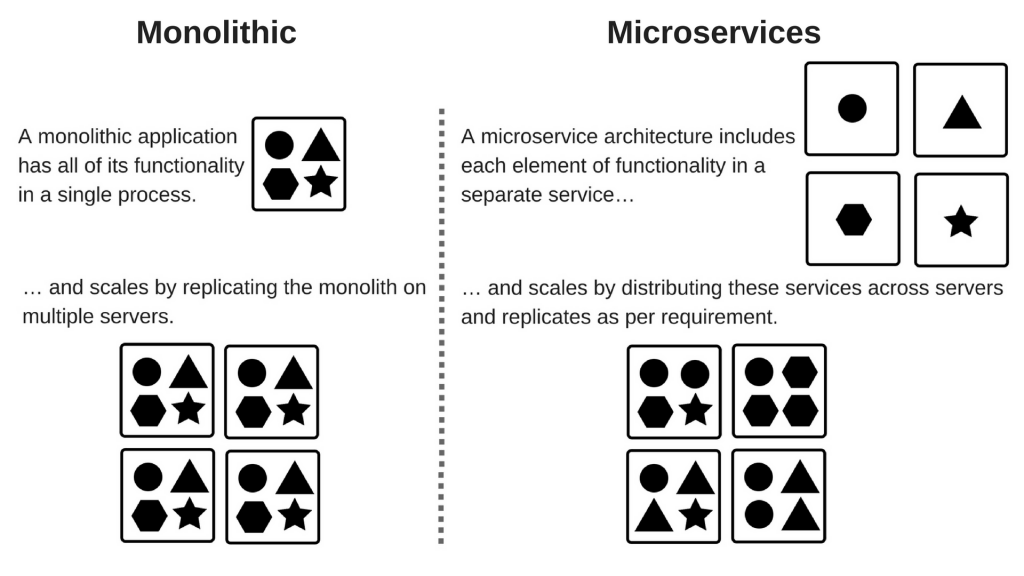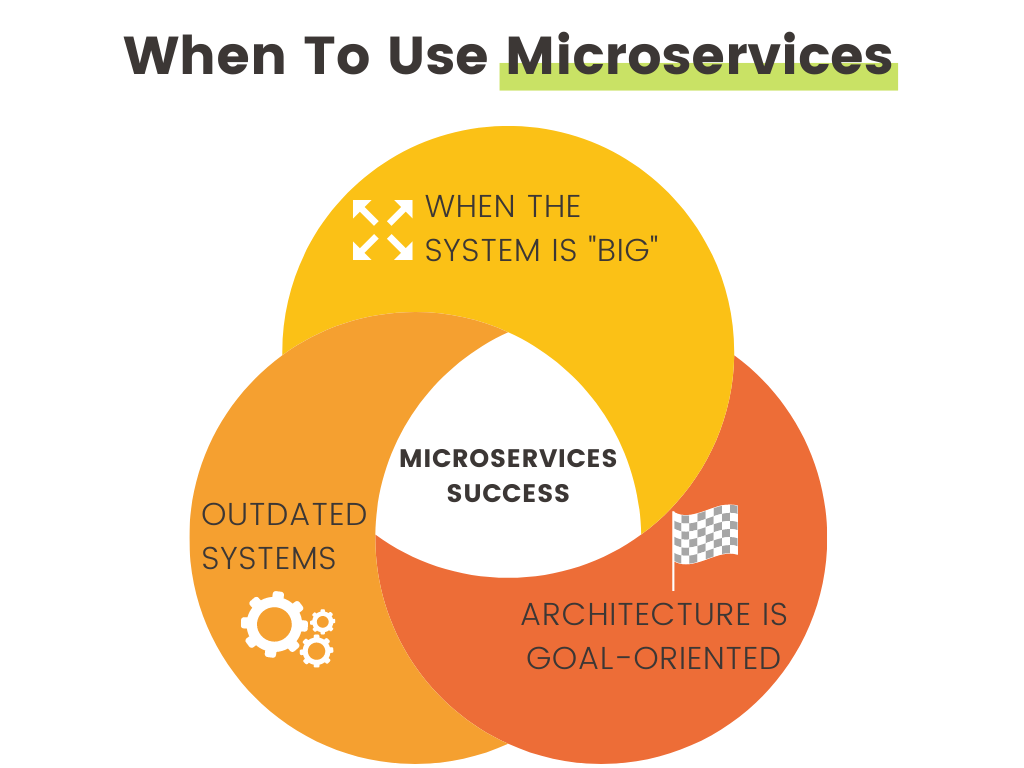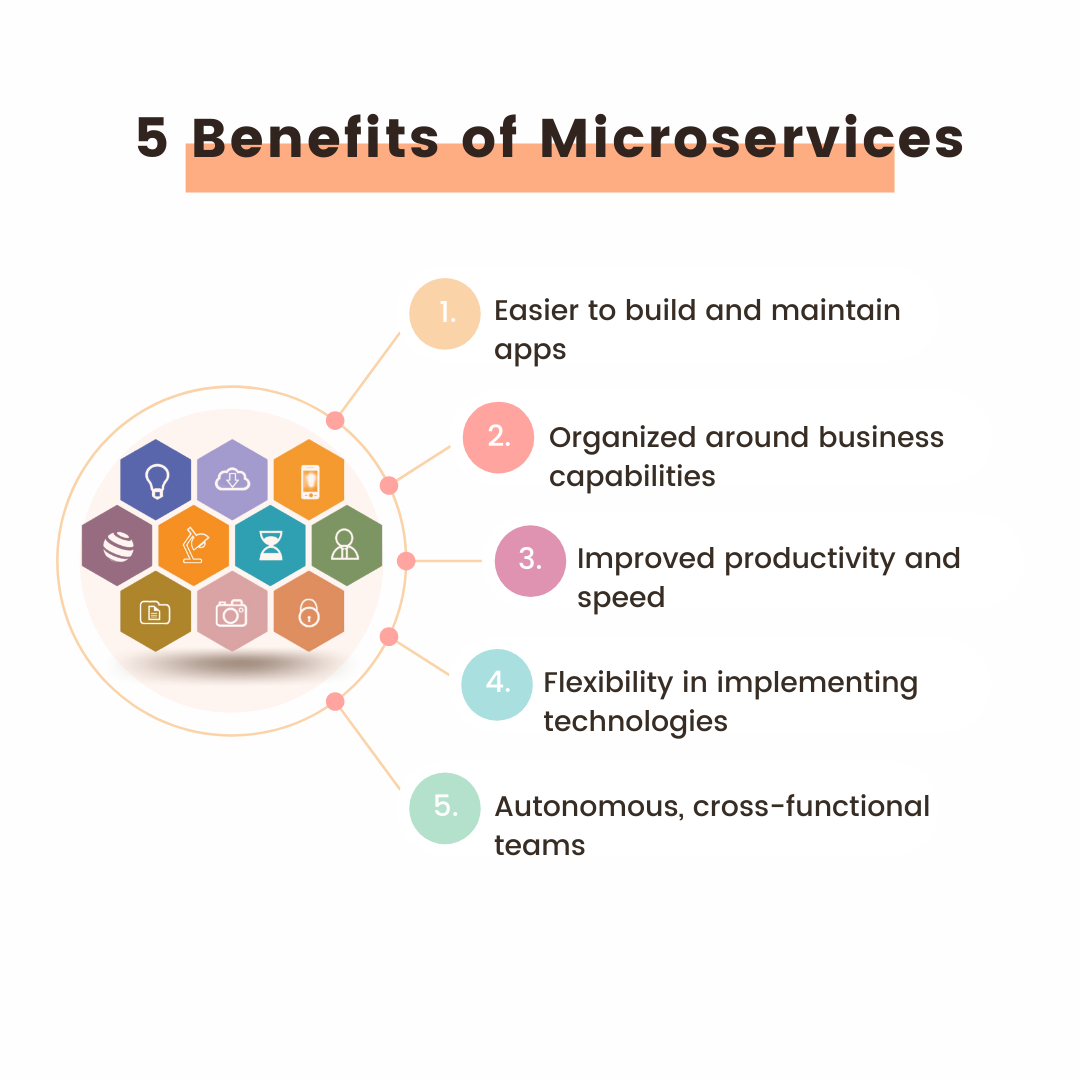Benefits of microservices architecture and business value it delivers to organizations planning to embrace enterprise agility through automated processes.
What are microservices?
Microservices – usually referred to as “microservice architecture” – is a manner of structuring an application such that the business capabilities to be provided in an application can be segregated, built and deployed as an independent service. Rather than developing the application as a whole (called monolithic application architecture), the entire business functionality in the application is split up into unique processes. Each process is designed and developed as an independent service, containing its own business logic and having its own set of databases.
The microservice architecture helps to reduce development complexity. Large or complex applications can be broken down into simpler, easily developable and maintainable services, that can be upgraded as and when business dynamics change and work processes have to be remodeled to reflect real-life working.

Microservice Example: Amazon Microservices
It’s hard to image a day when Amazon wasn’t the well-oiled eCommerce and technology giant we know today. But 2001 was a much different time for the company. Development delays, coding challenges, and service interdependencies plagued Amazon’s ability to meet the demand’s of its growing customer base, reports DreamFactory. And so, Amazon decided to break its monolithic application up into small, independently-running applications. For example, they developed a single service for the “Buy Now” button on a product page. Each of these small applications was assigned to a team of developers. With smaller groups of developers directing all their time and attention to a single microservice, they were able to solve challenges faster and easier than ever before.
Why businesses require microservices?
Businesses today have to compete aggressively in the market to retain their competitive edge. Consumer requirements evolve at a rapid pace and businesses have to improve the scope and quality of their products and services on a continuous basis to retain their consumer base and generate profits. Productivity levels can be increased by improving in-house processes, therefore, businesses have to focus upon streamlining their workflows and adopting new processes and methods to stimulate ROI generation. To do this, organizations require process automation methods that can be easily developed, maintained, deployed and scaled as and when they grow.
The goal is to automate in-house processes in the shortest time possible. But often, it can be difficult to identify and freeze business requirements in large organizations since numerous processes have to be identified and their scope determined before the automation process can begin. Moreover, architecting a new system without properly understanding existing problems not only results in building the wrong solution, but a significant amount of time as well as financial resources are wasted in developing counterproductive systems. Development takes time. Requirements can change by the time the application is built and scope creep can drastically affect the deliverables. Using microservices platform, organizations can automate the processes one-by-one without affecting deliverables as a whole. There are several other benefits of using microservices architecture.
When to Use Microservices
There are three major use cases where microservices implementation is recommended:
1. When the system is “big”
Here “big” does not relate to the size of the application, but rather to the scaling capability of business requirements. Large organizations have varied processes and requirements. They need to be automated and remodeled as the scope changes. Monolithic architectures typically following a Waterfall development process take time to build, change and deploy. Using microservices, a particular service can be redesigned and deployed within a short time without affecting the scope of other processes or services. New services can be built within short duration and deployed independently.
2. Architecture is goal-oriented
Monolithic architectures are usually homogeneous systems employing the same technology to develop business functionality. This can reduce the business scope as all technologies have their pros and cons. This limitation is reduced with microservices as different technologies can be used to develop individual processes and services best suited to deliver the business functionality required for that particular process. The goals specified for each process can be easily attained using microservices development processes.
3. Outdated systems
At times, significant amounts of time can be saved and it can be a lot easier to develop new systems rather than updating existing ones. Time and deliverability are two important factors affecting ROI generation and businesses might find it most cost-worthy to develop new systems instead of maintaining complex systems which are difficult to update, debug and test.
Benefits of Microservices
- Microservices have been around for a while, and are becoming a popular choice for continuously deployed systems. Many web giants such as Twitter, Amazon, PayPal and Netflix have successfully adopted microservice architecture. Following their footsteps, other businesses are fast moving away from rigid monolith architectures to flexible microservice development processes. But what makes them so special?
-
Easier to build and maintain appsOrganized around business capabilities
Microservices development focuses upon simplicity. Applications are easier to create and maintain when they’re split up into smaller, easily developable functionality modules. It is also easier to code, deploy, rebuild, re-deploy and manage the microservice. Moreover, each microservice can be designed using different programming languages, databases and software environments. If a particular microservice uses too much memory or overloads the processor, it will only affect the functionality of that particular service. Each service can be deployed independently. For example, AWS Lambda offered by AWS microservices architecture lets you run your code without provisioning or managing the servers. After uploading your code, Lambda manages everything required to run and scale the code.
-
Organized around business capabilities
Microservices facilitate the creation of products rather than projects. Teams can focus more upon developing business functionality instead of creating code logic and writing lengthy lines of code. They can be more creative, and center their working around business capabilities rather than focusing on technologies. Microservices can be used in multiple contexts – the same microservice can be reused many business process or over different business channels. Each team member is responsible for a particular service, which results in creating a smart, productive, cross-functional team.
-
Improved productivity and speed
As different teams or developers can work on different components simultaneously and you don’t have to wait for others to finish developing a particular piece of code functionality, the microservices architecture can tackle productivity and development speed issues in a much effective manner. It is also convenient to speed up quality assurance as each microservice can be tested independently even while other programmers are working on their modules.
-
Flexibility in implementing technologies and scalability aspects
Each microservice can be developed using a different technology. This simplifies the process of selecting the most appropriate tech stack to fulfill specific needs of each business component. Decoupled services written in different programming languages can coexist. This is good for scaling your solutions in the future. With microservices, one can quickly add new components into the existing architecture and scale a business process. Moreover, AWS Lambda offered by Amazon microservices provides serverless computing capabilities which reduces the hassles of managing servers.
-
Autonomous, cross-functional teams
Microservices are a great blessing for distributed or remote teams. It can be messy and complicated to develop a massive monolith system if you’re working across the globe. Developers get more independence and work autonomously – they can make technical decisions quickly. So, if you’re developing a large scale solution, be sure to consider microservice architecture.
Deriving the Business Value
The microservices architecture does not define or refer to a particular set of technologies, processes, or tools. Rather, you need to focus upon the goals. For any business, the sooner the work processes are automated, the quicker will be the delivery. In addition, automated processes have to be reliable and consistent in terms of what they deliver. The real business value of microservices can be realized by focusing upon two key aspects – speed and reliability – by balancing them effectively as per your needs.
1. Speed
Doing more in less time results in increased productivity and more sales. More sales mean enhanced ROIs.
-
Agility
Microservices platform offer agility while developing business functionality so businesses can build and deliver newer and more frequent products, functions, and features.
-
Composability
Compared to monolithic applications, microservices functionality, like those offered by Amazon microservices, can be developed within relatively shorter time frames and easily updated.
-
Comprehensibility
They simplify development planning, increase accuracy levels, and allow new resources to understand, build and maintain the functionality quickly.
-
Independent deployability
Each microservice can be deployed independently, therefore each business component can be prototyped, developed and produced more quickly.
-
Organizational alignment
When the management, process users and the development team are aligned and share a common focus, the ramp-up time is reduced significantly and teams find it easier to iterate the development process and build complex functionality in less time.
-
Polyglotism
When different technologies and development platforms are used for developing a single component, additional functionality can be captured through the technologies and business goals can be precisely achieved.
2. Reliability
Consistent work flows result in streamlined delivery processes and increased sales activity.
-
Greater efficiency
Microservices architecture reduces infrastructure costs and mitigates the risk of capacity related service outages
-
Independent manageability
Microservices reduce scheduled down-times
-
Replaceability of components
Microservices help to reduce technical debt created by aging systems and components
-
Stronger resilience and higher availability
Microservices tend to focus upon single processes rather than the entire business scope to it is not difficult to develop them. Moreover, they can be easily tested and debugged so they’re more resilient and ensure improved customer experience.
-
Better runtime scalability
Services can grow or shrink as the business scope changes.
Your Microservices Journey
Through its flexibility and modularization capabilities, microservices provide a goal-driven approach towards capturing the business potential and creating automated solutions that are easy to design, develop, test and deploy. A microservice architecture is an ideal option for corporate and small to big businesses in automating their process flows and realizing the business value in a planned and organized manner. However, like any technology platform, they have certain drawbacks. Microsoervices can prove to be expensive for start-ups and businesses operating on a shoestring budget. Nevertheless, considering their advantages, the pros outweigh the cons.
You might also like
Stay ahead in tech with Sunflower Lab’s curated blogs, sorted by technology type. From AI to Digital Products, explore cutting-edge developments in our insightful, categorized collection. Dive in and stay informed about the ever-evolving digital landscape with Sunflower Lab.








